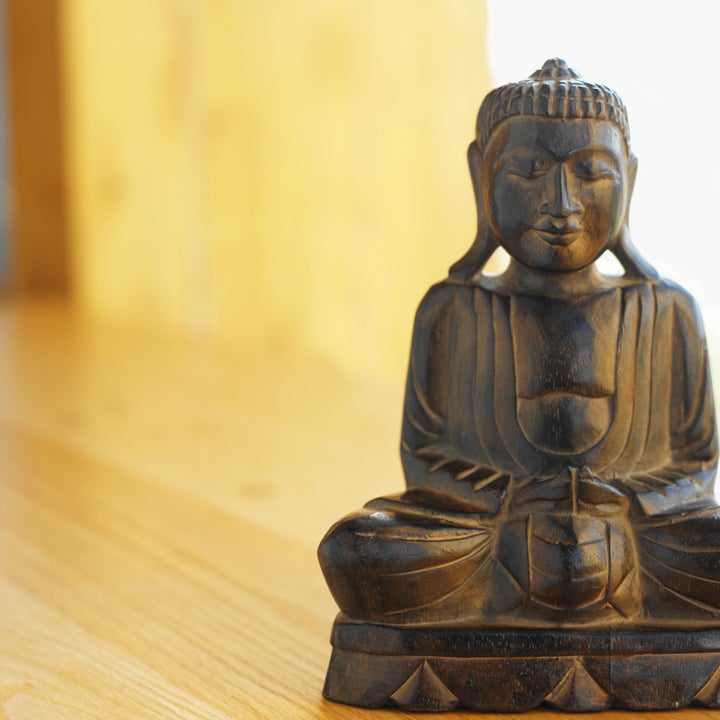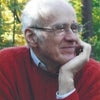
"Applied Buddhism" is a surprising label for a school of psychotherapy, but according to the founder of Hakomi this tag fits. Take a man trained in natural science, expose him to eastern religions and to West Coast therapy and, in the hands of Ron Kurtz, the result was Hakomi.
Kurtz died recently, after surviving a serious heart attack.
"If I get the opportunity," said Kurtz not long ago, in his wry and paradoxical style, "I'm going to kick Freud's ass." Kurtz discovered the key to his therapy was not the interpretation of dreams and stories but the "loving presence" of the therapist. Instead of eliciting psychoanalytic material, he or she looks for bodily "indicators," which might be gestures, facial expressions, postures, nervous tics. Guessing at the kind of experience that might have produced the indicator, the therapist proposes a "little experiment."
An experiment might start with Kurtz telling the client that he was going to make a simple statement and wants his or her first reaction. For example, if the person was avoiding eye contact (an indicator of fearfulness), Kurtz might say, "you're totally safe here," guessing that the client's unconscious thought otherwise.
Attending to the phrase and noticing the first response requires, in the client, a state of what Hakomi calls "mindfulness." This is where the Buddhist inspiration comes in. The mindfulness of the client and the loving presence of the practitioner are very like practices of the Buddhist meditator; and one of the eventual goals is similar, a kind of attentiveness, calm and compassion toward the self and others.
Hearing the quiet assurance that "you're totally safe here," the client might feel, "fat chance!" or "it's never been safe." This is a core belief, normally unconscious, and recognition of it usually brings up what Freud called the repressed, though Freud elicited repressed material and dealt with it in ways very different from Hakomi.
Kurtz says that at this point it's the job of the therapist not to ask questions or offer clever interpretations, but to be quietly supportive, to wait, and meanwhile (with his or her assistants) to supply the missing emotional experience (in this case, of safety). The process might go through many cycles.
Many of Kurtz's own sessions with clients were videotaped, and in some cases the tapes have been enriched by his commentary. It is astonishing, the speed with which repressed material comes up, not through dreams or jokes or childhood stories, but through feelings when the therapist says a simple phrase that contradicts one of the client's core beliefs.
I met Kurtz in a small men's group called "the relentless optimists." When we were discussing the name, Kurtz said, "yeah, I suppose you think things are so bad there's nothing left but optimism." While aware of global troubles about which we all get appeals for funds, Kurtz loved to laugh. "If a train crash is going to happen," he would say, "I will meanwhile have a picnic on the tracks." Unnecessary suffering was serious; for almost everything else, Kurtz had wit. One of the therapists trained by him posted a eulogy describing Kurtz as "genius ... clown." The Buddhist writer Wes Nisker might have invoked "crazy wisdom."
When I started a little interview show on regional TV, Kurtz was the first guest. A brief excerpt is on YouTube.
Kurtz enriched his school of therapy until the end of his life, reading widely, asking of each book or article, "How can it improve Hakomi?" During breakfast at a local eatery he would discuss Daniel Goleman's reporting on destructive emotions, V.S. Ramachandran's findings on phantom limbs or or Ken Wilber's theories on everything, capped by a Henny Youngman routine over the oatmeal.
At a memorial service (where the tears were balanced, as at an Irish wake, by laughter), one of his students called Kurtz a "bodhisattva." Whatever he was, he told me that one reason for his humor was to deflect projections; another, to acknowledge how people actually are and thus offer comic relief from dealing with human suffering.
On the day of his wedding, he wrote a poem about taking refuge "in the law, the teachings, the good books, the holy writings of Buddhas, saints, preachers, drunk on love, who saw clearly, saw and sang ... "
In the period in which I knew him, Kurtz worked hard to simplify his method, to "refine" it. He left an institute in Boulder, based on his early basic therapeutic discoveries; a center in the town where he lived, based on his latest findings; and an international network. If you live in many parts of the U.S. (or Argentina, Australia, Canada, England, Germany, Ireland, Mexico, Switzerland), you can find a Hakomi practitioner who will help with the "refined" method of "mindfulness-based, assisted self-discovery." The institute also has a list of therapists trained in the original method.
